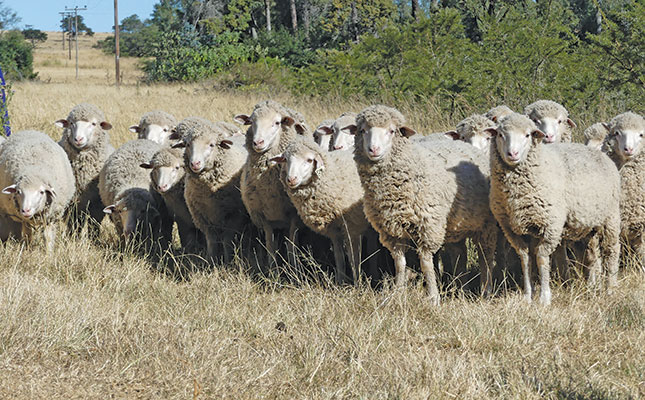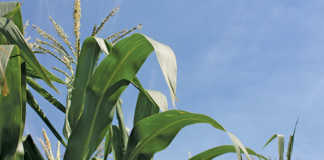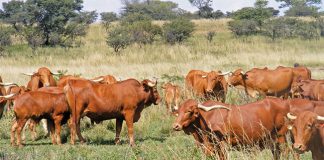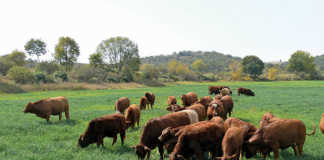
Photo: Mike Burgess
Asked how much green feed is planted on the 1 200ha property, Tom Blaine smiles.
“Green feed? The best green feed on our farm is the kikuyu under the dripping gutters.”
The veld and lick, he says, are all that his sheep have access to.
“Our sheep cope in this environment, and it’s all because of the guys before us. I can honestly say that the sheep on this farm are the closest to the original true intention of the Dohne Merino: a dual-purpose sheep producing from the veld.”
From Merino to Dohne Merino
Tom, who farms alongside his father, Peter, and brother, John, on Ross farm near Kei Road in the Eastern Cape, is proud of the family’s historical contribution to sheep breeding in the region.
He tells of the first Blaine in the region, George, who imported Australian Merino genetics in the 1880s. The family continued importing Australian fine-wool genetics up until the 1930s, when stud ewes were producing on average 7,7kg of wool.
Tom’s great-grandfather, Jack, who inherited Ross farm, then started becoming concerned about their reliance on wool at the expense of fertility and mutton production. In fact, the problem became so severe that he was forced to buy wethers (hamels) from up country to make up for the paucity of lambs.
By the 1940s, Jack was determined to breed a more efficient, plain-bodied, dual-purpose Merino for the sourveld conditions of Ross. His intentions dovetailed with that of JJJ Kotze from the Dohne Research Station near Stutterheim, and Jack, with his brother Deemie (from neighbouring Wauldby farm) were amongst the first farmers to become involved in the official Dohne breeding programme.
In 1945, the first German Merino x Merino crossbred lambs were born on Ross, and at weaning (four to five months) they weighed on average 28kg. This was the beginning of the Ross Dohne stud. Fertility improved to such a degree that within a few years Jack had surplus lambs that he could grow out into wethers.
Jack’s son, Michael, returned to Ross in 1956 and embraced the new scientific tools of diameter analysis and performance testing. He was a pioneer of the Eastern Dohne Central Nucleus Stud (EDCNS), a group breeding scheme that became central in the development of the now internationally acclaimed Dohne breed.
According to Peter, his father was dedicated to breeding “the perfect veld-reared sheep”, which sometimes put him at odds with “conventional” stud breeding.
He was, for example, opposed to feeding rams to make them productive by the two-tooth stage; he was convinced that allowing rams to mature on the veld to the four-tooth stage was a more sensible approach. In fact, in the early 1980s, he deregistered the stud over this issue. However, Peter, who returned to Ross in 1977, re-registered it in the mid-1990s.
Lamb production
Tom and John recently made minor adjustments to the management of their weaned lambs, as they are particularly susceptible to predators. They are allowed to graze on the veld during the day, but are kraaled in electrified enclosures, where they receive 150g of production lick per lamb per day until the age of 18 months.
Selected weaned rams receive 200g/ lamb/ day for the same period.
According to Tom, the cost of the feed is more than compensated for by the decrease in losses from predators, the increase in conception rates of the maiden ewes (mated at 18 months at an average weight of 40kg), and the fact that the two-tooth rams can begin breeding.
This small tweak in the Ross system has ensured a significant improvement in production. Tom does not believe that his lick ration has any negative effect on a lamb’s ability to grow into a hardy, parasite-resistant, mature sheep.
“The lick they’re fed is not enough to affect adaptability; it just keeps them ticking over, and they still feel the pinch,” he says. “I think there’s a difference in being an extremist and running a business; you have to make money at the end of the day as well.”
The quality of the Ross lambs is illustrated by their performance in the block test at the annual Komga Agricultural Show, which forms part of the South African Meat Industry Company national beef and lamb carcass competitions.
In 2017, Ross Dohne lambs clinched the top two groups of four-carcass placings with scores of 87,06 and 85,21, as well as the second-best individual lamb carcass with a score of 89,50.
The following year, the first and second individual lamb carcasses (with a score of 89,28 and 84,96 respectively) were also Ross Dohne lambs.
Adaptability to veld
Tom says that they select on functional efficiency and adaptability to veld conditions, before considering BLUP figures. A concern he has with BLUP is that it compares sheep from all production systems across the country, despite the great variety in conditions and production challenges.
“BLUP discriminates against an animal that runs on a lower plain of nutrition,” he explains.
“You can take any sheep into a system where there’s a lot of food and they’ll thrive, but not here on the veld where the Dohne comes from.”
The Ross Dohne stud and commercial ewes lamb on the veld with no lick, and conception rates are determined by climatic conditions (an average of 90% is achieved for both stud and commercial flocks).
For Tom, these figures are significant in that no expense is incurred on extra feed in the production of the lambs.
He is also a firm believer in the value of marketing mature wethers (up to six-tooth) that fatten on the veld with greater ease the older they get.
“For our approach to farming, wethers are a pot of gold. If they wean at 20kg to 25kg, a year later they’ll weigh 35kg to 40kg, and another year later they’ll weigh between 55kg and 60kg. That’s the equivalent of three lambs in terms of weight, three fleeces with fewer inoculations, and no mating.”
Tom admits that because adaptability to the predominantly sourveld of Ross is non-negotiable for them, it has proved difficult to find Dohne genetics outside of the Eastern Cape for their flock. Over the years, the most influential bought rams have been sourced either from Robbie Blaine’s Wauldby Dohnes (“across the fence”) or from the EDCNS.
Unsurprisingly, Tom focuses on breeding most of his own rams.
“If you have a stud, you don’t need to fork out a lot of money for rams. You can breed them yourself and they’re suited to your environment,” he says.
Grass and parasites
Strict selection has resulted in effective resistance to internal parasites in the Ross Dohne flocks, and dosing takes place only when there are visible complications.
“We’ve noticed it’s always the same sheep that are susceptible,” he says. “We [dose them] and then immediately cull them.”
Due to the very high tick loads of the area, the sheep are put through a belly bath after shearing in September and again in November and January. When they have developed significant amounts of wool, they are sprayed with a pour-on under their tails, between their hooves, and in their ears.
The Blaines aim to rest up to a third of the farm every year. In addition, a combination of cattle (200 Bonsmara x Angus x Boran cows) and sheep are used to get the most out the veld.
“You have to have sheep and cattle together,” says Tom.
“Your cattle graze your veld down and your sheep follow. Sheep prefer short grass.”
Phone Tom Blaine on 082 770 8893.











